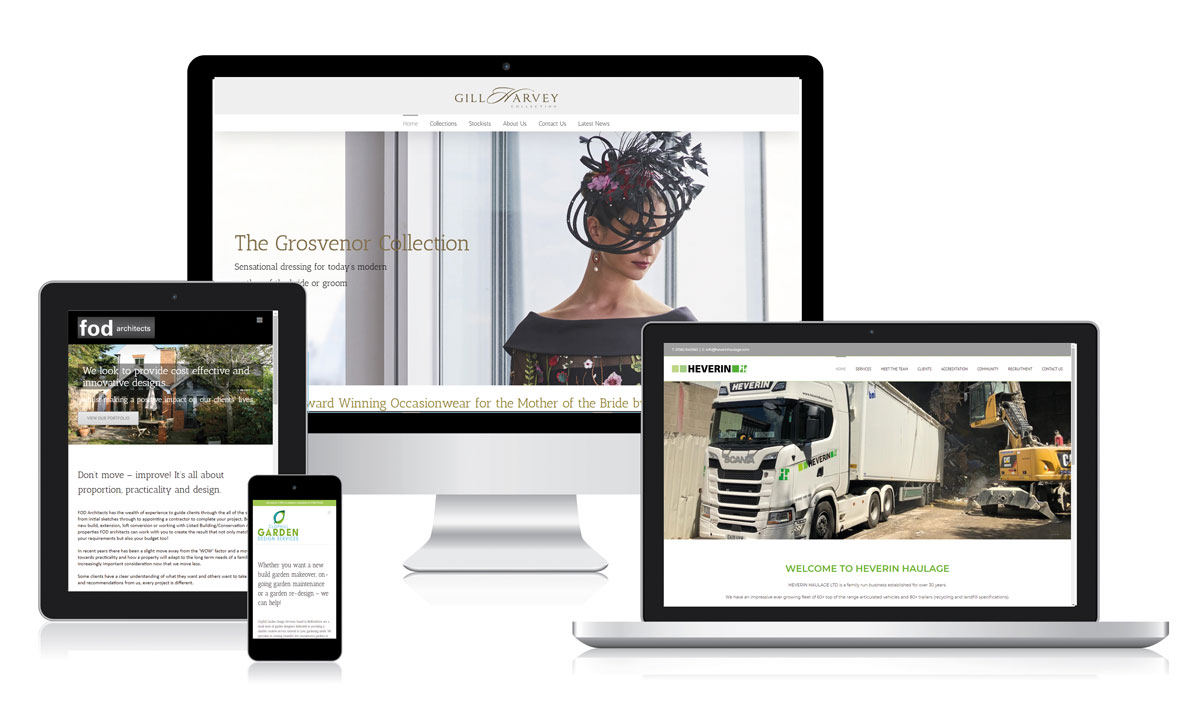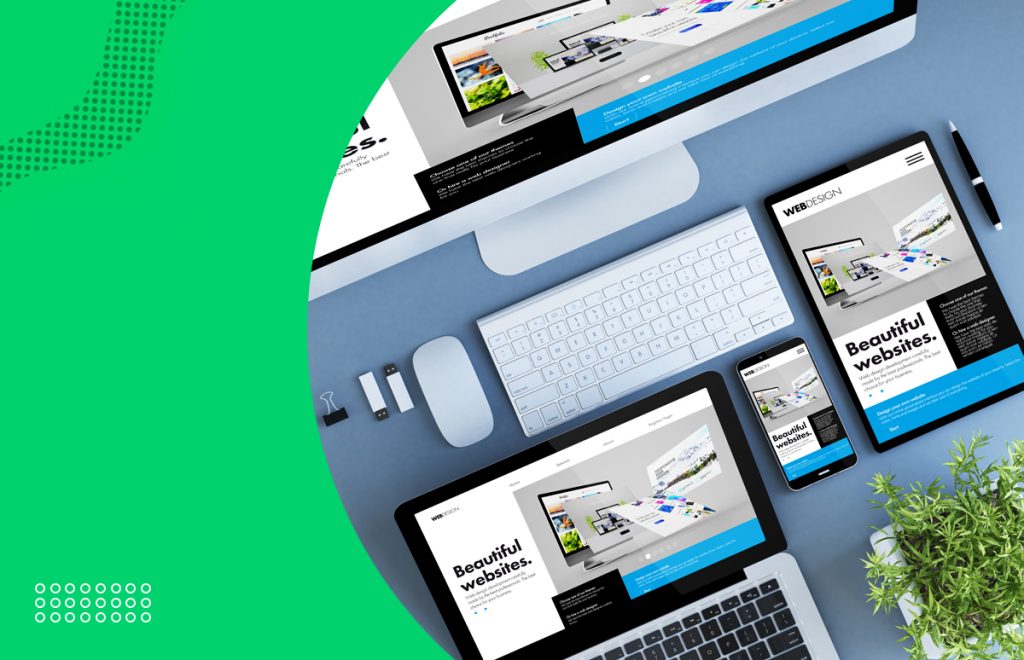How Website Design Can Drive More Traffic to Your Online Store
How Website Design Can Drive More Traffic to Your Online Store
Blog Article
The Ultimate Guide to Modern Internet Site Layout Trends
In the ever-evolving electronic landscape, contemporary internet site design fads play a vital role in forming customer experience and engagement. From the surge of minimalist design concepts that focus on simplicity to the impact of strong typography in specifying brand name identification, each aspect adds to a cohesive online presence. The emphasis on responsive and mobile-first approaches, alongside innovative microinteractions, further enhances functionality. Moreover, the expanding focus on lasting web style techniques shows a dedication to ecological responsibility. These patterns collectively increase crucial concerns concerning the future of effective website design and what it implies for customers and businesses alike.
Minimalist Design Concepts
Minimalist style concepts stress the concept that less is much more, advocating for simplicity and functionality in visual communication. This strategy strips away unneeded aspects, concentrating instead on essential parts that communicate the designated message efficiently. By prioritizing quality, minimal layout improves customer experience, enabling visitors to navigate web sites easily.
Core tenets of minimalist layout include making use of enough white room, which creates a sense of equilibrium and company. This unfavorable area not only directs the visitor's attention to crucial aspects yet additionally cultivates a relaxing visual atmosphere. Additionally, a restricted shade palette is often employed, making use of soft shades or single plans to preserve aesthetic cohesion and protect against overwhelming the individual.
Typography plays a critical role in minimalist style, where clear font styles are picked for their simplicity and efficiency in connecting material. Ultimately, minimalist design principles cultivate a concentrated environment that motivates customers to engage with the material, enhancing the total effectiveness of modern-day website layout.
Strong Typography Selections
Embracing strong typography choices has become a defining attribute of contemporary website design, as it properly records attention and communicates solid messaging. Developers are increasingly using typography not merely as a functional component yet as an essential aesthetic element that enhances the overall visual and user experience.

In addition, the juxtaposition of vibrant typography with minimalist style concepts permits striking contrasts, improving readability while maintaining visual appeal. Making use of whitespace around bold text better stresses its value, guaranteeing that the message resonates with the target market.
As digital landscapes end up being a lot more affordable, leveraging vibrant typography enables brand names to differentiate themselves and leave a lasting impression. The mindful option of font styles and their application can stimulate emotions, develop tone, and drive action, making bold typography a vital device in modern-day internet site style. Eventually, it is an effective method to enhance storytelling and ensure that key messages are not only seen however likewise really felt.
Mobile-first and responsive Design
Mobile-first and receptive design has actually become a crucial principle in contemporary site development, showing the increasing dependence on mobile gadgets for accessing on-line material. As user actions find more changes in the direction of mobile browsing, developers have to prioritize producing experiences that adapt effortlessly throughout different display sizes and resolutions.
A receptive layout ensures that a website automatically adjusts its format, pictures, and functionality based upon the tool being utilized. This strategy improves customer experience by supplying regular navigation and readability, irrespective of whether the visitor gets on a desktop, smartphone, or tablet computer. Moreover, mobile-first design advocates for creating sites initially for smaller sized displays, consequently scaling up to bigger display screens. This strategy motivates a much more streamlined and efficient layout process, concentrating on vital web content and performance initially.
Carrying out responsive and mobile-first principles not only deals with user choices yet additionally straightens with search engine optimization (SEARCH ENGINE OPTIMIZATION) techniques. Significant online search engine, like Google, prioritize mobile-friendly internet sites in their positions, making it essential for companies to take on these layout methods. In go to my site an affordable digital landscape, accepting responsive and mobile-first layout is not simply a choice; it is crucial for guaranteeing ease of access and interaction with a varied target market.
Engaging Microinteractions
Microinteractions play an essential function in improving individual engagement and total site experience, particularly in the context of mobile-first and responsive layout. These subtle layout elements offer immediate responses to users, making interactions more user-friendly and satisfying. Instances include switch animations, alert informs, and loading indicators, which not only guide users but additionally create a sense of connection with the interface.
Including interesting microinteractions can considerably enhance use by reducing cognitive lots. When individuals obtain aesthetic or auditory comments upon carrying out actions, such as clicking a switch or submitting a form, they feel extra positive in their selections. This fosters a smoother navigating experience, eventually boosting customer retention.

As web site style trends remain to progress, the importance of microinteractions can not be overemphasized. They function as the subtle yet effective touchpoints that change regular interactions right into remarkable experiences, therefore raising the total efficiency of contemporary internet design.
Lasting Website Design Practices
Lasting website design practices are ending up being significantly necessary as the electronic landscape grows and environmental issues climb. Programmers and designers are recognizing their obligation to create websites that not only serve individual demands but also decrease ecological influence. This method incorporates a number of crucial strategies.
First of all, optimizing energy usage is paramount. Sites ought to be developed to load swiftly and successfully, which lowers server power usage and enhances customer experience. Strategies such as picture compression, lessening HTTP demands, and making use of contemporary coding techniques add significantly to this goal.
Secondly, picking eco-friendly holding providers is critical - website design. Numerous holding firms are currently powered by renewable resource sources, enabling sites to run in an extra sustainable fashion. This option mirrors a dedication to lowering carbon impacts
In addition, adopting a minimalist style can improve sustainability. Fewer components on a web page result in much less information transfer, which not just accelerates packing times but additionally conserves resources.
Last but not least, advertising electronic access guarantees that websites reach a wider audience without unnecessary bloat, aligning customer experience with environmental responsibility. By incorporating these sustainable techniques, internet developers can add positively to both individual involvement and the world's wellness.
Verdict
In recap, modern website layout trends highlight the integration of minimal principles, bold typography, and receptive design to enhance user experience. Taking on these fads is vital for developing impactful digital experiences that reverberate with customers in a progressively affordable online landscape.
In the ever-evolving electronic landscape, modern site style fads play an important duty in shaping customer experience and engagement. By prioritizing clarity, minimalist design enhances customer experience, enabling visitors to browse internet sites easily.
Inevitably, minimal design concepts cultivate a concentrated atmosphere that urges individuals to involve with the web content, boosting the overall performance of contemporary site design.Microinteractions play an essential duty in enhancing customer engagement and total internet site experience, especially in the context of responsive and mobile-first design.In summary, modern site layout trends highlight the integration of minimalist principles, strong typography, and receptive design to enhance individual experience.
Report this page